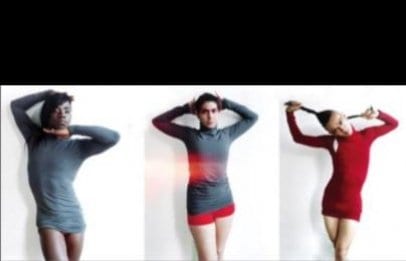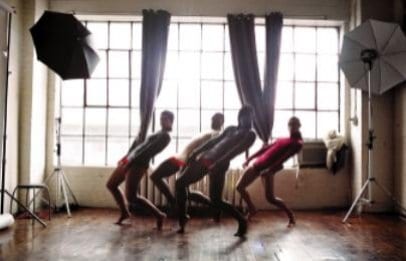
No caption Credit: xtra files
Jelani Ade Douglas-Lam never intended to start a dance company.
While studying at the School of Toronto Dance Theatre, he created a piece for the annual student showcase. Co-created with fellow student Sze-Yang Ade-Lam (who later became his husband, hence the hyphenated names), the piece sought to challenge conventional gender dichotomies in dance.
Taking to the stage in dresses, wigs and heels (not often seen in an institution where flowing gowns and manes of hair are typically reserved for women) the performance was a surprise hit, and the two decided to continue collaborating, not with a specific goal in mind but simply because they loved dancing together. But the more they performed, the more they saw a need for what they were doing.
“We realized our work was not only empowering for us, but for the queer community at large,” Douglas-Lam says. “The representation of people of colour on stage was nearly nonexistent, and the only representation of queer love was often superficial and derogatory.”
Celebrating their masculine and feminine sides, they took their company name from rapper Foxy Brown’s song “Il Na Na,” later adding DiverseCity Dance Company (DCDC), a nod to both Hogtown’s cultural smorgasbord and their queer identity. Creating their own work was fulfilling, but they also had bills to pay, which meant securing jobs complete with financial remuneration. But when they started auditioning for choreographers the couple came to a hard realization: despite their combined years of training, they often had difficulty securing work.
“It seemed like no matter how talented we were, even if we danced better than everyone at auditions, we often would not get hired,” Ade-Lam says. “I’m only 5’6, and so when people want to do a male-female love story, they often don’t know what to do with me. Even if I can do a lift better than a larger man at an audition, at the end of the day I’m still the same height as a female dancer. They don’t see my talent, just my body.”
Though they’ve since gone on to score gigs with inDance, Newton Moraes and Ontario Ballet Theatre, their collaborative relationship has formed the core of their creative output. They quickly found a demand for their unique brand of work, which combines a broad range of dance styles with a gender-queer sensibility. Gigs at Pride, Inside Out, Buddies and LG Fashion week broadened their audience base and solidified their reputation in the community.
But their upcoming show at the International Association of Blacks in Dance festival will take things to a whole new level, at least in terms of the folks they’re sharing the stage with. The tightly packed four-day event will see some of the world’s top companies descend on Toronto, including Alvin Ailey American Dance Theater, Cleo Parker Robinson Dance Ensemble and local favourites Ballet Creole.
The festival will mark the company’s premiere of Fire, a work collectively created along with Kumari Giles, Whitney Mah and Byron Beckford. While the title immediately conjures an exploration of the heat of passion or recapturing one’s inner animal, the group had an entirely different kind of fire in mind when conceiving the work — the eternal one religious homophobes envision them burning in.
“The piece is about the reality we face for living and loving unapologetically rather than choosing to be invisible,” Douglas-Lam says. “It’s a word I hear yelled at me almost every day by those who don’t wish to understand me but would rather see me burn to death simply because I do not abide by the rules set by mainstream heterosexuals.”
Though their work is always explicitly queer, performing at this festival has a special resonance.
“It’s a piece exploring homophobia experienced by people of colour being presented at a festival of black artists,” Ade-Lam says. “This means opening a dialogue about LGBT rights and how they relate to racism and other forms of oppression, creating solidarity between human rights movements that are sometimes seen as separate.”
When a collective of artists pins their politics to their sleeves it can read as compensation for lack of artistry or technical ability. But in Ill Nana’s case it’s neither; as movers they’re easily on par with some of Toronto’s best. Their anti-oppression stance isn’t just about making everyone feel okay; it’s about creating better art.
Working toward inclusion means including (in a literal way) styles of movement not often considered part of a conventional dance vocabulary. Whether it’s martial arts, traditional ethnic dances, voguing or just working it in heels, bringing their diverse backgrounds to the table means making stronger work.
“We don’t place a greater value on any particular dance forms,” Ade-Lam says. “Each dancer we collaborate with comes with a rich movement tradition. We use them all like a big palette of paint to express how we feel.”
The Deets:
International Association of Blacks in Dance Conference & Festival
Thurs, Jan 26 – Sun, Jan 29
Showcase presentations: Queen Elizabeth Theatre
190 Princes’ Blvd, Exhibition Place
Ill Nana will appear
Thurs, Jan 26 at 9pm
Canadian Showcase Presentation


 Why you can trust Xtra
Why you can trust Xtra


